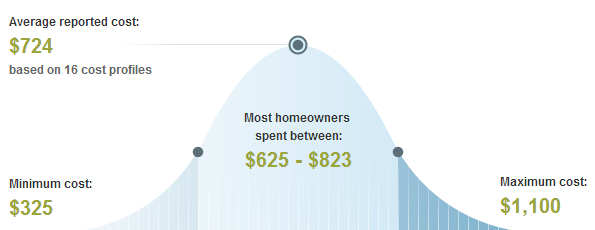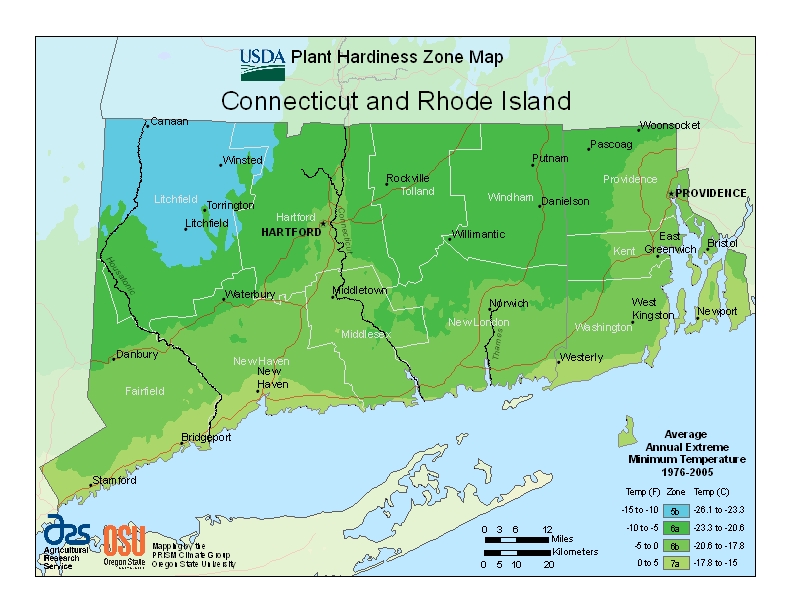Skip to a section:
- Costs – What should you be paying for tree maintenance, removal and stump removal in New London, Connecticut? We have the numbers for you to compare against a quote.
- FAQs – Did you know the white oak is not only the state tree of Connecticut but also the tallest tree? These and more known facts about the city of New London and the state are below for you to use when cultivating trees in the area.
- Services – Find a professional in New London to care for your trees year-round or on a case-by-case basis. Call one today.
How Much Do Tree Services Cost in New London?
When properly maintained, trees add beauty, value and vitality to a landscape. Many trees live for hundreds of years when carefully pruned and located in ideal growing conditions. Regular tree care can preserve the health of trees as well as prevent more costly problems in the future.

Cost of Tree Removal
The average cost of tree removal is $725 in New London, Connecticut, and The exact cost that a home or landowner will pay for tree and tree stump removal will depend on the height and diameter of the tree. It’s also important to see where the power lines and water lines are situated in relation to the tree, as that could affect the total cost of removal if professionals have to work around such obstacles.
Stump Removal Cost
the cost for stump removal is generally $2.50 per inch measured by the diameter of the tree. Some tree services will include stump removal as part of the price quote for taking down a whole tree, and others may give a small discount if the homeowner agrees to take care of the wood from the tree instead of having the tree service haul it away.
Cost of Tree Maintenance in New London
Tree maintenance can help to extend the lifespan of a tree. Proper tree care can also protect nearby structures from damage caused by falling tree limbs. The average cost of pruning, trimming and maintaining trees in New London is approximately $480 per visit. The cost of trimming and pruning services will depend on the diameter of the limbs that need trimming and whether specialty equipment such as a bucket truck is needed to access the limbs that need maintenance.
New London Tree Facts & FAQs
New London, Connecticut has its own unique tree requirements and regulations. Planting native trees that will thrive in the local environment can add pleasure and enjoyment to owning a home or land in the community. Knowing which trees do best in the area can help home and land owners make wise choices.
Tree Removal Regulations in New London
The city of New London requires that trees that are decayed, insect-infested, damaged or structurally weak be removed. If a tree overhangs an adjoining property, property owners can trim or remove the part overhanging their land or work it out with the neighbor to have the entire tree removed. If the landowners cannot come to an agreement, a petition can be filed with the Department of Energy and Environmental Protection. If a tree on public land needs to be removed, a permit from the Department of Energy and Environmental Protection is required.
According to the Connecticut Light and Power utility company, trees that grow taller than utility lines must be trimmed to clear 8 feet on the sides of an overhead utility line, 10 feet underneath the line and 15 feet above it. The utility company will trim trees every five years. Trees that cause a hazardous situation may be trimmed more frequently or be cut down.
If the tree is an imminent hazard, it’s best to have it removed as soon as possible. For pine trees, winter is the best time to remove the tree. This is because the tree is dormant and not yet producing sap. For deciduous trees, autumn after the leaves have fallen off or during winter are ideal times for removal. Tree removal is usually easier when there are not leaves on the trees.
Thriving Trees
The fire cherry or pin cherry (Prunus pennsylvanica) thrives in any soil condition and can withstand the strong winds that New London gets during severe storms. Hackberry or sugarberry (Celtis occidentalis) trees will grow almost anywhere, including in urban pollution, in clay or sandy soils and in very wet or very dry environments. It also thrives when planted next to sidewalks because it has deep roots. Redbud and dogwood trees thrive when planted together and are often planted in an alternating pattern along sidewalks.
The state tree of Connecticut is the white oak, also known as the charter oak (Quercus alba). It is featured on the back of the Connecticut state quarter. These trees can live for 200 years or more and reach heights over 100 feet. The white oak is the tallest of all varieties of oak trees.
Other popular and common trees in New London include:
- Red maple (Acer rubrum)
- River birch (Betula nigra)
- Flowering dogwood (Cornus florida)
The white oak is the tallest tree that grows in this part of Connecticut. It averages 80 feet but can reach heights of 100 feet or higher. Maples and other varieties of oak trees grow to about 70 feet in height. Some of the shortest trees found in New London include downy serviceberry or downy juneberry (Amelanchier arborea), pagoda dogwood (Cornus alternifolia) and staghorn sumac (Rhus typhina), which all grow to a height of between 15 and 20 feet.
Apple trees are the most important fruit tree in New London. Growers may also plant cold-hardy mulberries, quince, peach, and sweet and sour cherry trees for fruit. Extreme wintertime cold may inhibit a season’s fruit production for any of these trees.
Obstacles to New London’s Arbors
Norway maples are invasive trees and will spread to other areas if not vigorously pruned and maintained. Paper, white and black birch trees shed plenty of bark and require regular cleanup. They are also prone to disease. Roots from sugar and red maple trees are prone to causing problems with sidewalks, home foundations, sewer and water pipes and other structures.
Flowering dogwoods are subject to developing anthracnose infection and crown cankers. The white oak may develop oak leaf blister, while needle rust is common in pines and cedar trees. Birch trees may develop bark splitting. Elms may develop Dutch elm disease, and powdery mildew affects varieties of willow, maple and oak trees. Connecticut researchers have produced hybrids between Japanese chestnut and American chestnut trees as native trees were once decimated by disease.
Plant Hardiness Zones in Connecticut
Here are the plant hardiness zones for Connecticut as provided by the USDA:

Image Sources:
Red maple
River birch
Local Tree Services in New London
